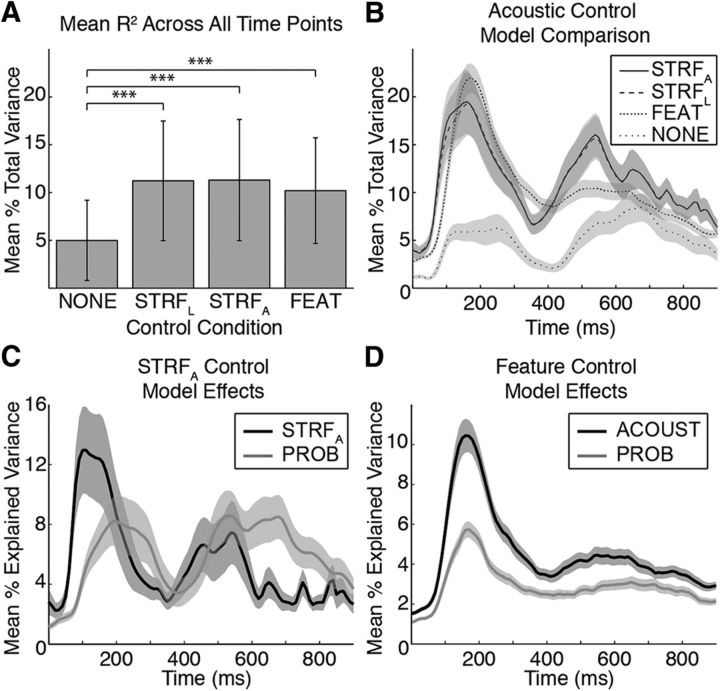Figure 3.
Controls for acoustic selectivity and dynamic coarticulation. To examine the encoding of phonotactic statistics having controlled for a given electrode's spectrotemporal tuning or phonetic feature preferences, we used a variety of acoustic models. We compared the encoding of Pfwd and Pbkw transition probabilities with no acoustic control (NONE), after removing STRFL, after removing the effects of an STRF that accounts for neuronal adaptation through synaptic depression (David and Shamma, 2013) (STRFA), and through a phonetic feature encoding model (FEAT) that explains acoustic selectivity as a linear combination of phonetic features, such as fricatives, plosives, high-back vowels, etc. A, Across all time points and significant electrodes in each model, the STRFL, STRFA, and FEAT models explained more of the total variance in the neural signal than the NONE model (p < 10−5) but did not differ significantly from each other (p > 0.3). B, At each time point, the percentage of total variance in the neural signal explained by each acoustic model plus Pfwd and Pbkw transition probabilities showed similar time courses for all four controls. The NONE model (sparse dotted line) had lower R2 values compared with the other three models, except well after acoustic offset (∼650 ms). The two STRF models had nearly identical time courses (solid and dashed lines), with the STRFA model performing slightly better on average early in the word. The FEAT model (dense dotted line) showed a similar time course, but with a less pronounced peak around word offset (∼500 ms). C, For the STRFA model, we compared the percentage of explained variance for the acoustic versus phonotactic probability (PROB) features and found nearly identical dynamics as in the STRFL model (Fig. 8B). D, Acoustic and probability encoding in the FEAT model showed similar dynamics as the two STRF models, although with a less pronounced lag between acoustic and phonotactic features. In all four models, Pfwd and Pbkw explain a significant amount of the neural data, suggesting that, when both gross and fine-scale acoustics (e.g., coarticulation) are controlled, phonotactic probability still shows significant modulatory effects on the neural response.

